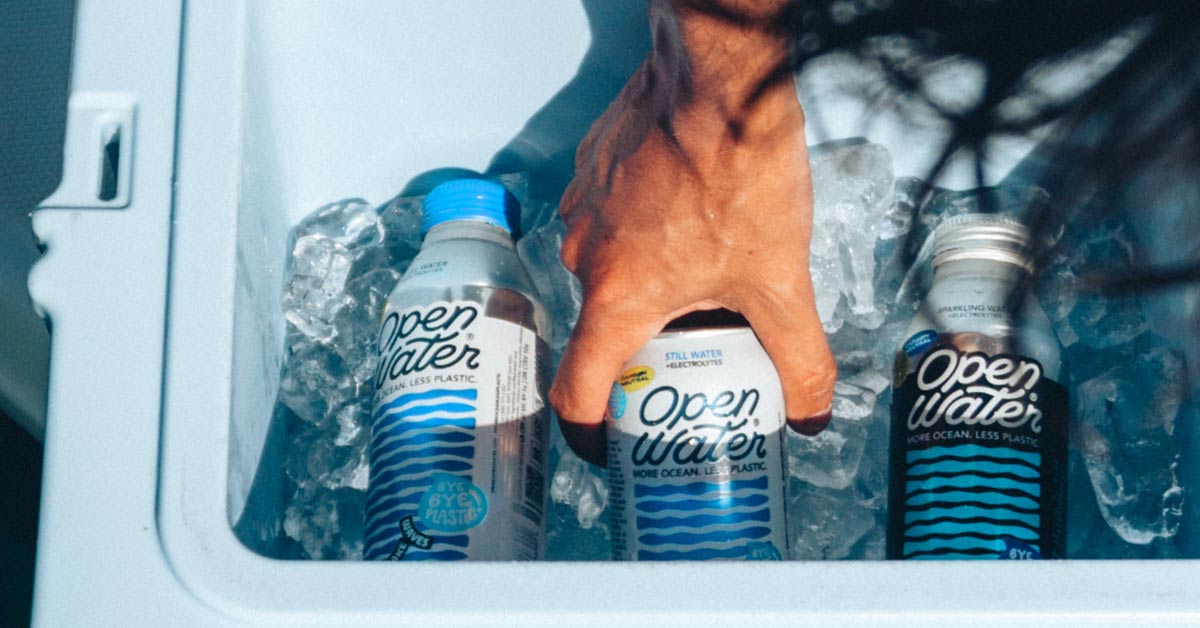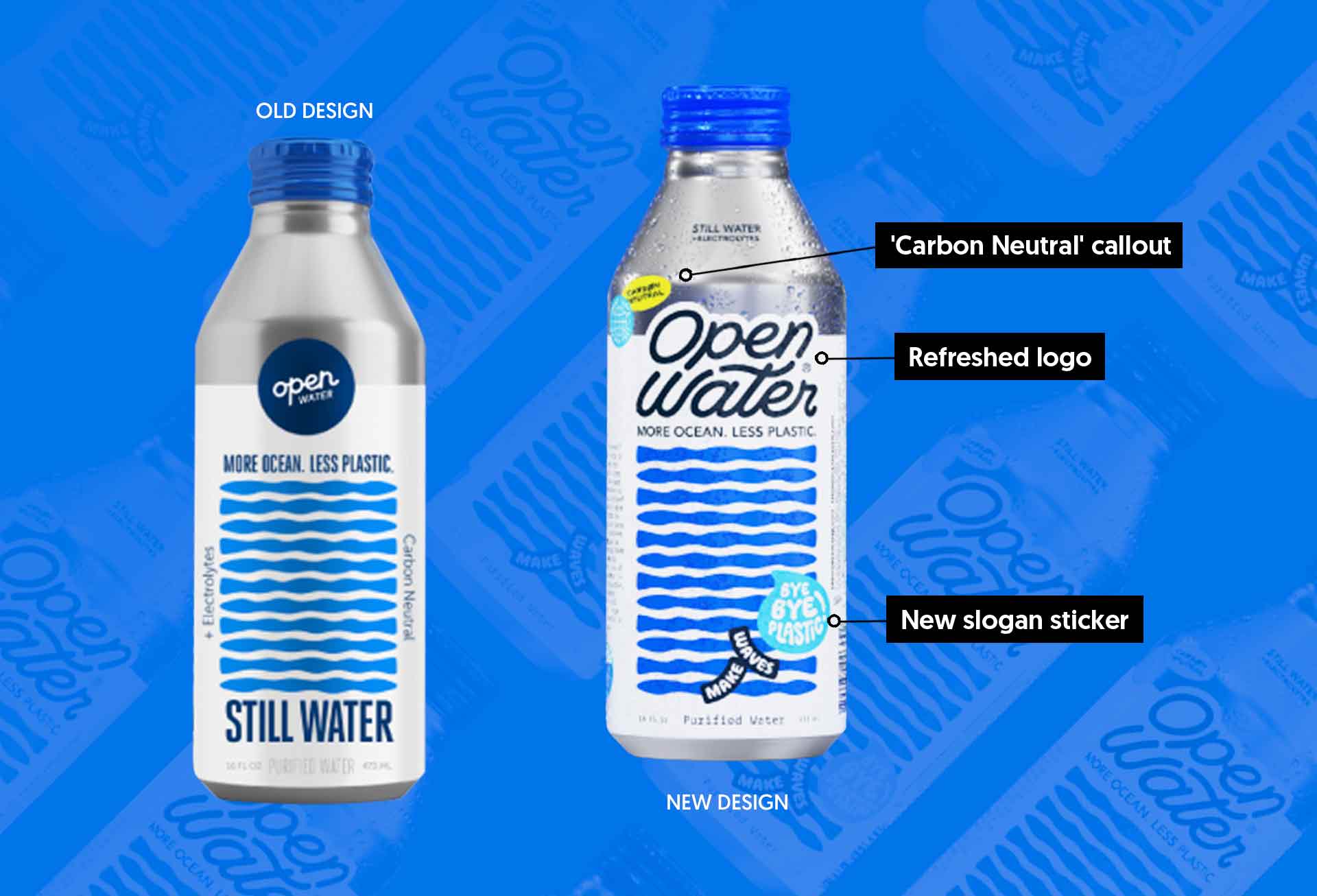Ten years ago this past September, Open Water launched its aluminum canned water into a plastic bottle-filled category. Now that metal packaging has become more common, the brand decided to refresh its visual identity to reestablish its value to consumers.
“The reason we exist is to get rid of plastic bottles and to do something about ocean plastic pollution,” said co-founder and CEO Nicole Doucet.
Finding ways to communicate that sustainability message to consumers has been a year-long process. Chicago-based Open Water turned to Swedish branding agency F&B Happy — whose parent company Forsman & Bodenfors designed Oatly’s rebrand almost 10 years ago — to help the water brand maintain its identity while bringing a more “approachable” look to its bottles and cans.
Between F&B Happy and co-founder Jess Page’s internal design team, Open Water landed on an “optimistic” design that was less “doom-and-gloom” and allowed consumers to feel that they were “part of a movement,” Doucet said.
The end result was redesigning the name in a bolder, cursive font and adding two new “sticker” callouts. One is a slogan that reads “Make Waves. Bye, Bye Plastic!” and the other nods to its “Carbøn Neutral” credentials. Open Water decided to keep its oceanic label art which was targeted internally as a recognizable element to its identity.
“Choosing which brand of water you buy is this tiny, tiny change,” she said. “On its own, it is so insignificant. But when you take millions and millions and millions of people making that choice together, it can change things significantly.”
Not only did it feel like it needed to compete with the other canned water brands that have come into the category, but Open Water wanted to differentiate its sustainability credentials on not only packaging but sourcing as well. Doucet pointed to premium water brands that use single-sourced aquifers as giving consumers an inaccurate picture of what it means to be a climate-friendly brand.
“People don’t realize that when they buy one of these, it means that every bottle that is sold comes from that one location,” she said. “The water needs to travel halfway across the world to get to you. A lot of people don’t think about the impact of that.”Open Water uses an asset-light production structure where it works with five filling stations (with a sixth to be added by the end of the year). The team calls it a sourcing message of being “Local Everywhere.”
In the early days, Open Water had a hard time breaking into retail because grocery buyers didn’t quite understand the value proposition of aluminum bottled water. The company was more focused on on-premise sales for much of its first 10 years.
The refreshed branding was a way to build out Open Water’s retail ground game where it has been focusing resources in the last year. It has landed deals with Whole Foods and Kroger in the last year as well as recently announcing foodservice deals with Chipotle and at the L.A. Clippers new Intuit Dome arena.
Now, as retailers and consumers have become more acquainted with aluminum-packaged water thanks to insurgent brands like Liquid Death, Path or JUST Water “spending hundreds of millions of dollars to make consumers more aware,” Doucet said, the category is poised for even bigger moves.
Aluminum cans in the U.S. have a very high recycled content of 73%, according to a life-cycle report from Ball Corporation, and 50.4% of aluminum cans are collected for recycling after use.
Despite the increased competition in canned water, there is still a long way to go to changing consumer habits.
Waiakea is the only water brand with an aluminum SKU on Circana’s recent MULO + convenience data tracking for the non-flavored convenience/bottled still water category. The Hawaiian water brand grew 23.9% in the most recent 52-week period, topping the category in percent growth but still only making up 0.47% dollar share among the 20 other tracked brands.
Doucet sees new entrants into the category as an affirmation that Open Water has made waves in changing what consumers value in bottled water.
“People don’t understand that we proved that it could work and it brought other players to the category,” she said. “Our impact is now multiplied, and I love that. I think it’s the coolest thing that now we’re not the only ones.”

